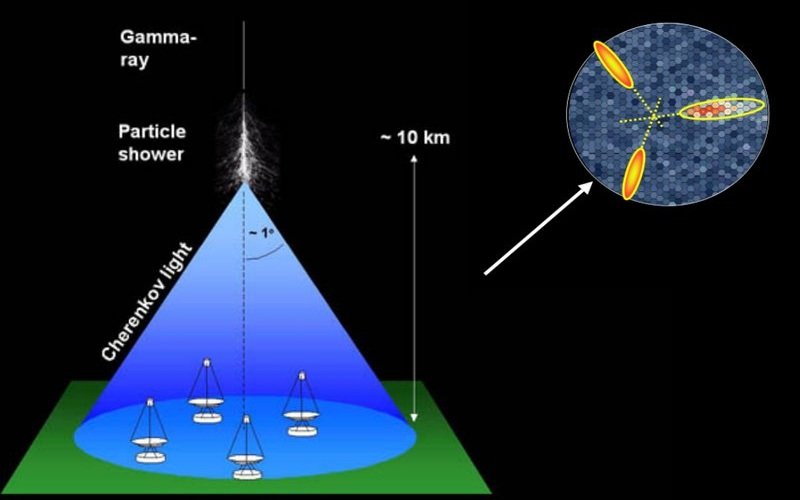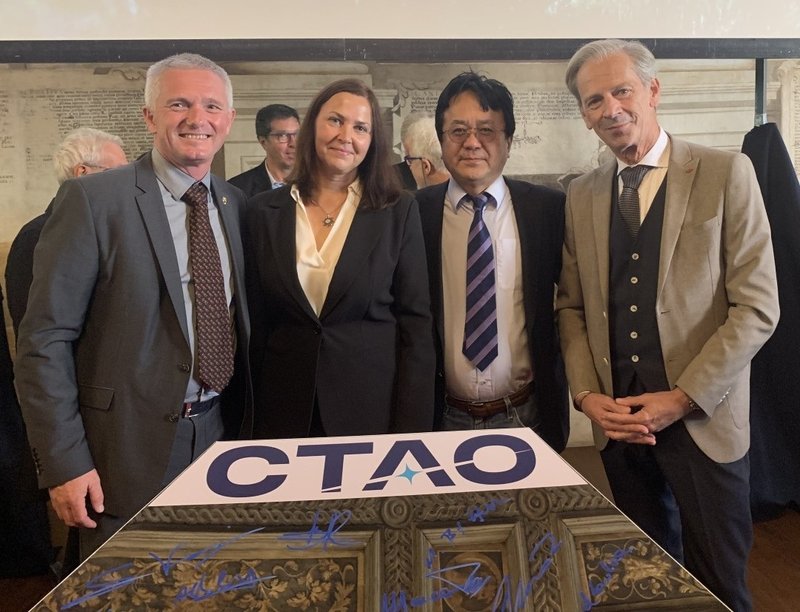Cherenkov Telescope Array Observatory (CTAO)
What Is It?
The Cherenkov Telescope Array Observatory (CTAO) is managed by the European Research Infrastructure Consortium (CTAO ERIC), established on January 7, 2025, with founding members including Austria, the Czech Republic, France, Germany, Italy, Poland, Slovenia, Spain, and the European Southern Observatory (ESO).
- Headquarters: Italy
- Northern Array: La Palma, Canary Islands, Spain
- Southern Array: Paranal, Atacama Desert, Chile

CTAO will explore cosmic photons with energies from 20 GeV to 300 TeV, advancing our understanding of the universe’s most energetic processes, the nature of dark matter, and fundamental physics.
Beyond astronomy, CTAO will drive innovation, technology, and data science, providing valuable contributions to the European Research Area and enabling open access to data for researchers worldwide.
Slovenian scientists, supported by the Ministry of Higher Education, Science, and Innovation as part of the Research Infrastructure Development Plan 2030 (NRRI 2030), play an important role in this endeavor.
What Do We Explore?
Cosmic very high-energy (VHE, E ≥ 30 GeV) photons — also known as very high energy gamma rays — carry unique information about the most energetic phenomena in the Universe. They help us study violent non-thermal processes such as supernova explosions in our galaxy or the environments surrounding supermassive black holes in galactic cores.
Because photons do not deflect in magnetic fields, they point directly back to their cosmic origins, providing a clear view into these extreme regions. Despite their importance, VHE photons are extremely rare — even the brightest sources, like the Crab Nebula, emit them at fluxes thousands of times lower than that of cosmic rays.
When VHE photons enter Earth’s atmosphere, they interact with atmospheric nuclei and create extensive air showers of secondary particles. These particles emit brief flashes of Cherenkov light as they travel faster than light in air. This effect forms the basis of VHE gamma-ray astronomy, where arrays of telescopes image these flashes to reconstruct the energy and origin of the incoming gamma rays.

The next-generation facility — the Cherenkov Telescope Array Observatory (CTAO) — will be the world’s largest and most sensitive VHE gamma-ray observatory, improving sensitivity by at least an order of magnitude and detecting over 1000 new gamma-ray sources across the sky.
Our work focuses on:
- Dark matter and new physics exploration using machine learning methods.
- Integration of measurements from other high-energy and extreme-energy experiments.
- Development of infrastructure, including a Raman LIDAR system for atmospheric monitoring at the La Palma site, in collaboration with the Institut de Física d’Altes Energies (Barcelona), the Universitat Autònoma de Barcelona, and the Università degli Studi di Padova.
Who Are We?
Since 2013, Slovenian scientists from the University of Nova Gorica (UNG) and the Jožef Stefan Institute (JSI) have been active members of the Cherenkov Telescope Array Consortium (CTAC), contributing to the design, strategy, and scientific program of the CTAO.
Senior Members
- Samo Stanič – Group leader and Slovenian delegate in the CTAO ERIC Council; coordinates construction-related activities in Slovenia.
- Marko Zavrtanik – Member of the CTAO ERIC Administrative and Finance Committee (AFC).
- Serguei Vorobiov – Representative of the Slovenian group in the CTAC Board.
- Gabrijela Zaharijas – Coordinator of science-related activities in Slovenia.
- Danilo Zavrtanik – Representative of UNG in the CTAO gGmbH Council.
Postdoctoral Researchers
- Saptashwa Bhattacharyya
- Christopher Eckner
- Judit Pérez-Romero
- Pooja Bhattacharjee
- Saqib Hussain
- Miha Živec
PhD Students

